5 Best Aircraft Carriers of World War II – As the clouds of war appeared on the horizon in the 1930s, military planners around the world still put their faith in the power of the battleship.
Germany’s naval rearmament efforts included the building of two powerful battleships, while plans to launch a carrier were sidelined.
Likewise, Italy and the United States each developed new classes of battle wagons.
The aircraft carrier was a secondary consideration at best, and only after the UK’s Royal Navy raid on Taranto and Japan’s stunning sneak attack on Pearl Harbor did opinions change.
The Battle of the Coral Sea in May 1942, which was the first time enemy fleets engaged at such distances and where the vessels never saw one another, only served to prove that the age of the carrier had truly arrived.
These carriers stand out as the very best of the Second World War:
5 Best Aircraft Carriers of World War II – HMS Illustrious (87)
The lead ship of her class of carriers built for the Royal Navy, she took part in the aforementioned Battle of Taranto in late 1940, where her aircraft sank an Italian battleship and badly damaged two others. While German Stuka dive bombers later crippled her, HMS Illustrious was repaired in the United States and returned to service.
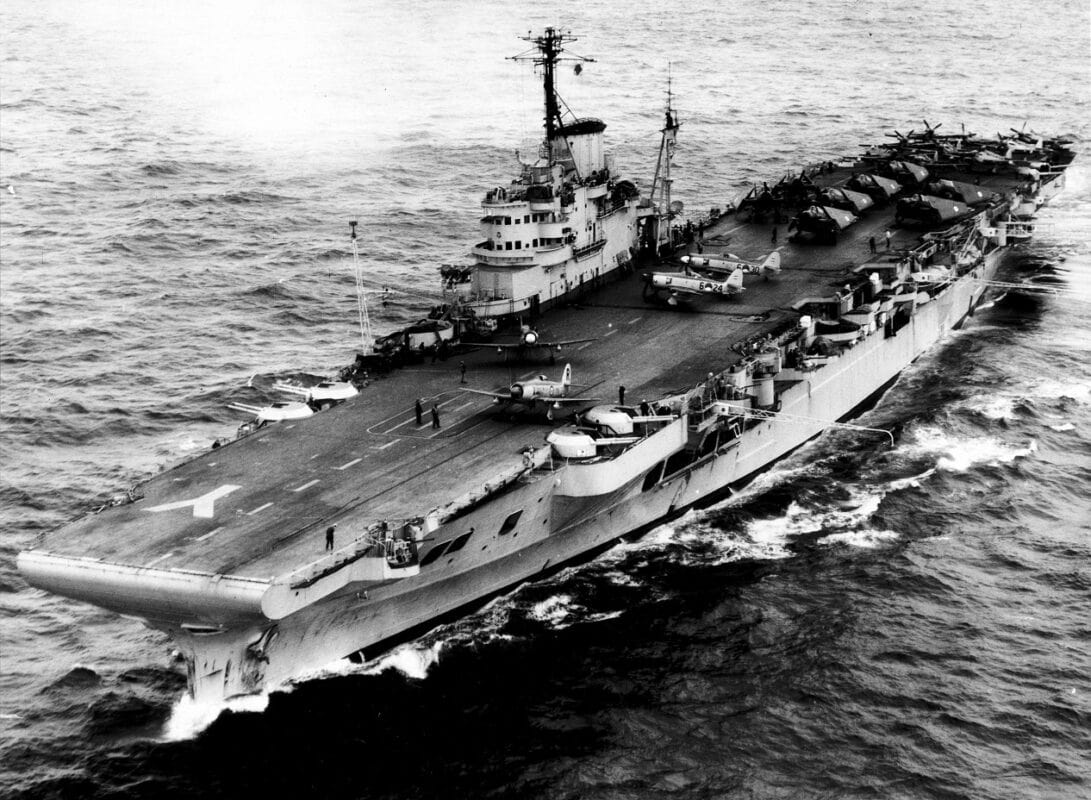
HMS Illustrious
She took part in operations against the Japanese-occupied Dutch East Indies in 1944 and later participated in the Battle of Okinawa.
5 Best Aircraft Carriers of World War II – USS Lexington (CV-16)
Originally named Cabot, the United States Navy’s Essex-class carrier CV-16 was renamed to commemorate the recently-lost USS Lexington (CV-2). During World War II, the carrier would go on to earn 11 battle stars for actions in major engagements, while her crew received the Presidential Unit Citation.
USS Lexington took part in a raid on Tarawa in late September 1943 followed by an attack on Wake Island a month later. She returned to Pearl Harbor to prepare for the Gilbert Islands operation, and in November, CV-16 made searches and flew sorties in the Marshalls, covering the landings in the Gilberts. She played a major role in Task Force 58’s (TF-58’s) victory in the Battle of the Philippine Sea and later provided close support for the invasion of Iwo Jima.
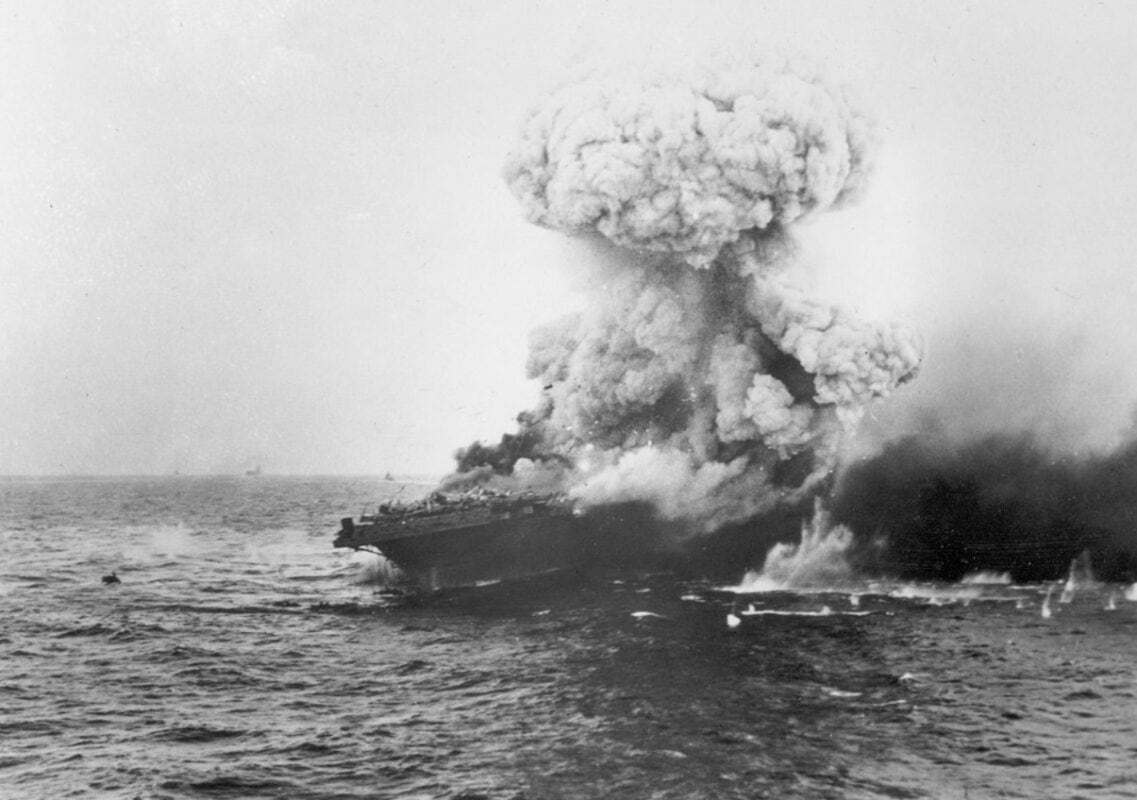
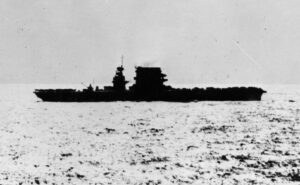
USS Lexington (CV-2) during the action, seen from USS Yorktown (CV-5), 8 May 1942. Large number of planes on deck and low sun indicate that the photo was taken early in the morning, prior to launching the strike against the Japanese carrier force. Yorktown has several SBDs and F4Fs on deck with engines running, apparently preparing to take off. Lexington, whose silhouette has been altered by the earlier removal of her 8-inch gun turrets, has planes parked fore and aft, and may be respotting her deck in preparation for launching aircraft. Official U.S. Navy Photograph, now in the collections of the U.S. National Archives.
Preserved as a museum ship, USS Lexington has also been a bit of a pop culture icon – appearing in such films as 1976’s Midway, where she stood in for USS Yorktown (CV-5); and TV’s War and Remembrance, where she served as USS Enterprise (CV-6). She was later altered to resemble a Japanese carrier as well as USS Hornet (CV-8) for 2001’s Pearl Harbor.
5 Best Aircraft Carriers of World War II – USS Yorktown (CV-10)
Another Essex-class carrier to be named for a lost flattop, USS Yorktown (CV-10) participated in several campaigns in the Pacific Theater of Operations, where she earned 11 battle stars and a Presidential Unit Citation. Dubbed the “Fighting Lady,” Yorktown supported multiple amphibious landings and took part in the Battle of the Philippine Sea, which ended Japanese carrier dominance in the Pacific.
After the formal Japanese surrender aboard the battleship USS Missouri (BB-63) on September 2, 1945, USS Yorktown was part of the Allies’ “show of strength” and entered Tokyo Bay on September 16. She is now preserved as a museum ship in Charleston, S.C., and serves as the centerpiece of the Patriots Point Naval and Maritime Museum. She was declared a National Historic Landmark in 1986.
5 Best Aircraft Carriers of World War II – USS Anzio (CVE-57)
The Casablanca-class escort carrier could be described as “the little flattop that could,” as CVE-57 took part in naval operations supporting attacks on the Gilbert and Marshall Islands, New Guinea, and the Marianas Islands. Originally classified as an auxiliary carrier she was initially named Alikula Bay but was renamed Coral Sea before being renamed USS Anzio just after the end of the war. She participated in the Battle of Iwo Jima and the Okinawa Campaign, while after the war helped bring home U.S. troops as part of Operation Magic Carpet.
CVE-57 was the most decorated escort carrier of the war, earning 11 Navy Unit Commendations and nine battle stars. Sadly, she was sold for scrapping, while not a single Casablanca-class carrier has been preserved as a museum ship.
5 Best Aircraft Carriers of World War II – USS Enterprise (CV-6)
This carrier participated in more major actions against the Imperial Japanese Navy than any other U.S. warship during the Second World War. Though she was at sea on December 7, 1941, some 18 Douglas SBD Dauntless dive bombers from her Air Group engaged the Japanese during the attack on Pearl Harbor, while she later took part in the Battle of Midway – helping to turn the tide in the Second World War.
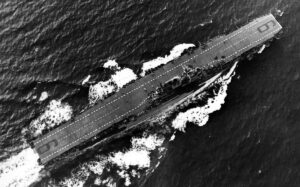
The U.S. Navy aircraft carrier USS Enterprise (CV-6) underway off Pearl Harbor, Hawaii, on 2 August 1944. She is painted in Camouflage Measure 33 Design 4Ab.
USS Enterprise went on to see further action at the Battle of the Eastern Solomons, the Battle of Santa Cruz Islands, and later in the Battle of the Philippine Sea and the Battle of Leyte Gulf. During the Guadalcanal Campaign, her aircraft covered the landings. In February 1945, Enterprise took part in the Iwo Jima invasion, then raids on the Japanese home islands, and the Okinawa campaign in April.
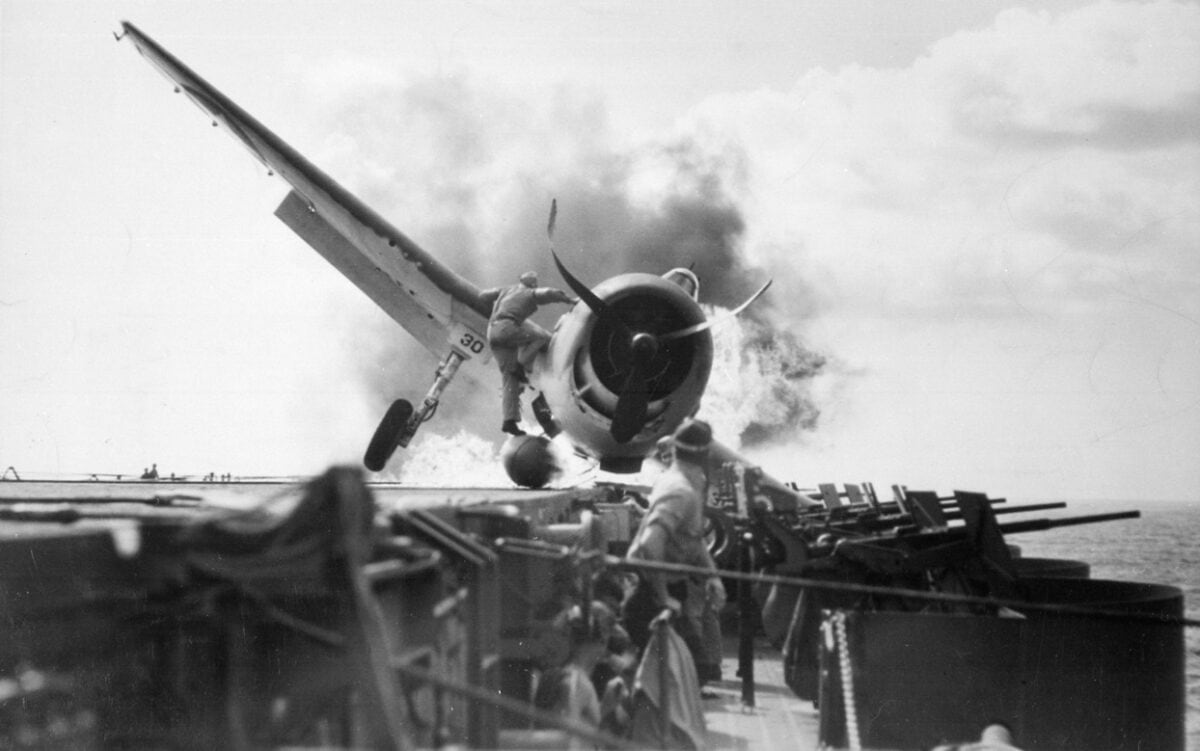
By the end of the Second World War, her aircraft and guns had shot down 911 enemy planes, sunk 71 ships, and damaged or destroyed another 192 vessels. On three different occasions during the war, the Japanese had erroneously announced that CV-6 had been sunk in battle, which earned her the nickname “The Grey Ghost.”
For her actions in the Pacific War, USS Enterprise earned a total of 20 battle stars, making her the most decorated U.S. Navy warship of the conflict.





